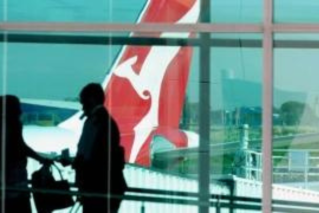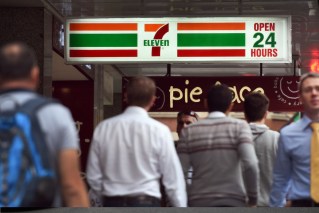RBA leaves rates on hold, as eyes turn to timing of cuts

Source: TND
The Reserve Bank has left official interest rates on hold at its first meeting for 2024.
The decision, which had been widely predicted, comes amid speculation the rapid rise in interest rates inflicted on borrowers in the past 18 months has come to an end.
It leaves the official cash rate at 4.35 per cent, where it has been since the last rise in November.
It also means households will be spared another $78 increase in monthly repayments on a typical $500,000, 25-year home loan that would have occurred had the RBA hiked interest rates again.
Home-loan borrowers have already faced more than $1200 in monthly repayment increases since the bank began hiking rates in May 2022.
However, the Reserve has hinted that interest rates may not yet be over.
“While recent data indicate that inflation is easing, it remains high. The board expects that it will be some time yet before inflation is sustainably in the target range,” it said in its post-meeting statement.
“The path of interest rates that will best ensure that inflation returns to target in a reasonable timeframe will depend upon the data and the evolving assessment of risks, and a further increase in interest rates cannot be ruled out.”
Tuesday’s pause follows a promising run of domestic data that had most forecasters tipping an end to hikes, and looking with a renewed focus on when cuts will begin.
Critically, inflation eased to 4.1 per cent in the December quarter, a two-year low. It was down from 5.4 per cent in September, and was lower than than expected.
Combined with signs of heat coming out of the labour market and subdued consumer spending, the RBA board had been almost universally tipped to make the decision it did.
All 27 experts and economists surveyed by Finder forecasted no change on Tuesday.
Tweet from @RBAInfo
The RBA’s economic forecasts were also expected to be tweaked to reflect improving economic conditions and its language toned down in its post-meeting statement – and governor Michele Bullock’s first post-meeting press conference later on Tuesday.
But despite the expectation of cuts on the way, HSBC chief economist Paul Bloxham said Australia would likely be the among the last developed country to start lowering interest rates.
“The RBA was one of the last to start hiking, lifted rates by less than many others and that inflation is falling more slowly in Australia than in, say, the US,” Bloxham said.
Australia’s weak productivity growth – “distinctly worse than elsewhere” – was keeping unit labour costs too high to be consistent with returning inflation to target, he said.
Earlier on Tuesday, the Organisation for Economic Co-operation and Development warned the world’s central banks must keep rates high for long enough to beat inflation for good.
It urged countries to ensure underlying inflationary pressures were “durably contained” before turning to cuts.
In its latest economic outlook, the OECD said there was scope to begin cutting rates soon – as long as there was enough progress on consumer prices.
“Scope exists to lower policy interest rates as inflation declines, but the policy stance should remain restrictive in most major economies for some time to come,” its report read.
While highlighting resilient global growth and faster progress on inflation than expected, the OECD warned it was “too soon to be sure” price pressures were under control.
However, it is projecting inflation to be back within target in most G20 countries by the end of 2025.
The OECE said strong unit labour cost growth and still-high core inflation were key to inflationary episodes lasting into next year, the OECD said in its report.
In the short term, surging shipping costs triggered by attacks on vessels in the Red Sea were flagged as an inflation and activity risk.
Elevated shipping costs could add 0.4 percentage points to inflation after about a year, if they persist.
Economic forecasts for Australia were largely unchanged, with the organisation expecting headline inflation to reach 3.5 per cent in 2024 and 2.8 per cent in 2025.
A subdued 1.4 per cent economic expansion is forecast for 2024, before growth hopefully picks up to 2.1 per cent in 2025.
-with AAP








